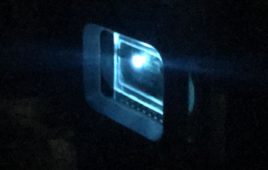The world watched in horror on April 15 as a massive fire raged at Notre-Dame de Paris, a medieval Catholic cathedral considered one of the world’s most magnificent examples of French Gothic architecture.
The fast-moving inferno raged for 15 hours, destroying most of the church’s wooden roof and sending its 19th century spire crashing to the ground.
Hundreds of firefighters battled the blaze and brought it under control before it could obliterate Notre-Dame’s iconic twin bell towers. Emergency personnel and religious ministers carried precious artwork and holy relics out of the cathedral to safety. Thankfully, no one was killed.
Donations have poured in from around the globe to rebuild. French President Emmanuel Macron has publicly called for restoration work to be completed within five years, and an international architecture competition will be held to redesign the lost spire and roof.
Construction on Notre-Dame originally began in 1160, and the names of those who first worked on the building have been lost to history. The building has been further modified over the past seven centuries. Obviously, architectural technology as changed and evolved during this time frame, and it would be impossible to collect every single modification and measurement from Notre-Dame’s history.
However, a 2015 laser imaging technique mapped out every nook and cranny of the cathedral, and it might be the key to restoring the church to its former glory.
Andrew Tallon, a professor of art at Vassar College, used lasers to create a spatial mapping of the cathedral, resulting in an intricately detailed digital model of the church. A tripod was set up in 50 different locations within Notre-Dame, and the lasers were able to scan and collect various digital points. Tallon utilized a Leica ScanStation C10 laser scanner to gather one billion data points, which software was then able to render into images of the three-dimensional space. The lasers provided measurements accurate to within one millimeter, which a medieval or even modern architect could never possibly replicate by hand.
Tallon sadly passed away from cancer in 2018. His work with laser technology, however, will impact many generations to come.


